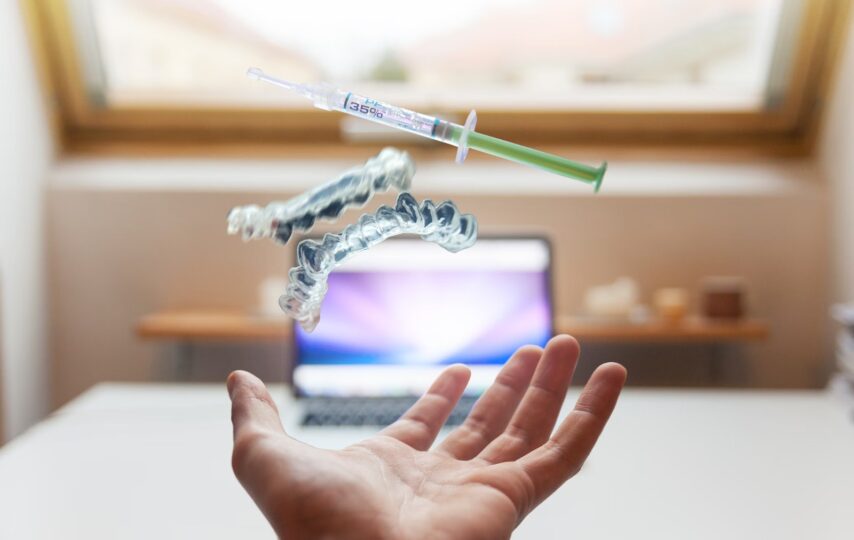Laser processing has been used in many industries for decades, especially metals and glass. However, the medical implant manufacturing industry is catching up in laser processing because of the unique properties of the materials involved. As per recent reports, 2 million medical devices exist around the world.
This article discusses some common challenges with laser processing in the medical implant manufacturing industry and provides solutions for overcoming them.
Applications of Medical Laser Processing
Laser processing can be used to manufacture both metal and plastic implants.
- Custom implants: Laser-based processes enable the creation of custom-made medical devices tailored to a patient’s exact needs, such as customized knee replacements or dental crowns. According to a market analysis report by Global Newswire, the dental crowns and bridges market will cross USD 466 million by 2032.
- Complex geometries: The ability to use laser processing for creating complex geometries makes it possible for manufacturers to design unique products that may not have been feasible using traditional manufacturing methods.
- Complex surface topology: Using different materials with varying hardness levels means manufacturers can produce implants with both hard and soft parts. This feature allows them greater flexibility in designing products with specific functions or applications.
You can connect with a company offering laser processing services to leverage laser processing applications in medical implant manufacturing. You can go through case studies on a company’s website to determine the expertise of the laser processing solutions provider. The case studies will give you insights into how the photonics solutions provider has helped other clients in the past.
One of the many companies with customer success stories listed on their websites is Novanta Photonics. The company has listed the challenges, applications, and solutions of the case studies. For example, one of the case studies shows that the client was looking for an additive manufacturing application to overcome the challenge of low throughput in manufacturing.
Novanta Photonics helped the client improve productivity by 22% with one of its products. Similarly, you can go through such case studies on a company’s website and select the right one for your requirements.
Challenges in Laser Processing for Medical Implant Manufacturing
Several challenges must be overcome when laser processing is applied to medical implant manufacturing.
- The material used in the production of implants has a high melting point and therefore requires high-energy lasers. This results in excessive heat generation and thermal stress on the material surface during processing.
- Surface modification is another issue that must be addressed before laser machining occurs. For example, if you want to create an undercut feature or remove excess material from your workpiece, you will need some pre-treatment steps before starting your job. This may involve chemical etching or mechanical polishing, depending on what surface finish you want after lasing it off.
- Surface cleaning and sterilization are also important factors when working with medical devices. These processes help ensure product quality by removing foreign particles from surfaces where they might interfere with the functionality or cause infection upon insertion into human tissue. Today, you will come across more than 115 surface modification technologies and coating solutions in the market, which enhance the physiochemical features of medical devices. One of these is laser surface modification technology.
Some Implants Are Challenging to Cure Due to the Material’s High Melting Points
Some implants are challenging to cure due to the material’s high melting point. This can be a problem if you’re using an optically-curable UV-cure resin, which requires a certain amount of energy input to change from liquid to solid. If your material has a very high melting point, it may take longer than expected to become fully cured and ready for use as an implant component.
For example, some metals and alloys have high melting points. Metals like this require higher temperatures than other materials when curing them with UV light, which means more time waiting for them to cool down before they’re ready for processing further downstream in production lines like yours.
Some Implants Can Undergo Distortion and Warping Due to Thermal Stress
Thermal stress, or the difference in temperature between the implant and surrounding tissue, can cause distortion and warping. The higher your body temperature, the more thermal stress you will experience. This is why we recommend keeping your patients cool before surgery so they don’t get too hot during their procedure.
Suppose an implant has been subjected to thermal stress during manufacturing or installation and is exposed to higher temperatures after the installation. In that case, there is a risk for cracking or warping due to the thermal expansion of metal components within bone structure over time and contraction due to cooling at night when blood flow decreases.
Solutions for Laser Processing of Medical Implants
Here are the solutions to the challenges of laser processing for medical implants:
Surface Cleaning and Sterilization
The surface of a medical implant must be cleaned and sterilized. Cleaning removes dirt and debris from an object, while sterilization kills bacteria on it.
When you clean something, you remove contaminants such as oil or other organic matter so they don’t interfere with its function. In contrast, sterilization uses chemicals or heat to kill microorganisms present on an object before use to prevent infection after surgery.
Ethylene oxide, or EtO, is widely used during the manufacturing process to sterilize instruments. Over 20 billion instruments sold in the US annually are sterilized with Ethylene oxide.
The benefits of cleaning include:
- Improved aesthetics: A clean surface looks better than one covered in grime. It also helps prevent corrosion over time if left untreated. This can lead to wear and tear on parts inside and outside your body that come into contact with it.
- Better functionality: A clean part will work better than one that hasn’t been cleaned properly because there won’t be any buildup between moving parts which could slow down their speed or make them stick together when used together later down the line at some point during the treatment/operation cycle.
Surface Modification
Surface modification is a way to improve the biocompatibility of an implant. It can be achieved by a variety of methods, including:
- Laser surface treatment (LSST). This involves using a laser to modify the surface properties of an implant. For example, LSST can be used to change its refractive index or roughness.
- Plasma discharge treatment (PDT). This involves exposing an implant’s surface to plasmas generated from gases such as oxygen and nitrogen, which are then ionized using high-voltage pulses from an electric arc between two electrodes placed near each other inside an inert atmosphere chamber. The resulting ions bombard the material being treated at high temperatures, causing chemical reactions that alter its properties.
Additive Manufacturing
Additive manufacturing is making 3D solid objects based on the prints from a digital file. The technology has been used for rapid prototyping since the 1980s. Still, it’s only recently that additive manufacturing processes have become capable of producing finished parts with properties similar to those made by traditional subtractive methods.
Additive manufacturing can be performed on any material. Plastic, metal alloys, and even ceramics are all possible options. However, each type requires its specific set-up and equipment, which means no single approach works across all applications.
Conclusion
As you can see, many factors affect the performance of a laser processing system. Understanding your application and choosing the right processing method for your needs is important.







